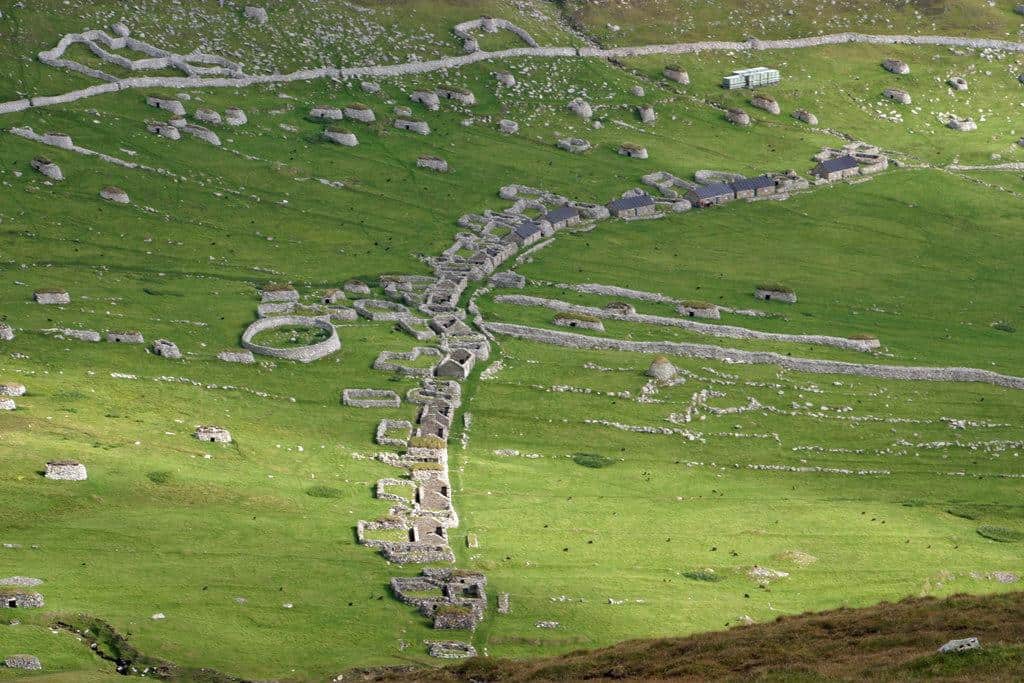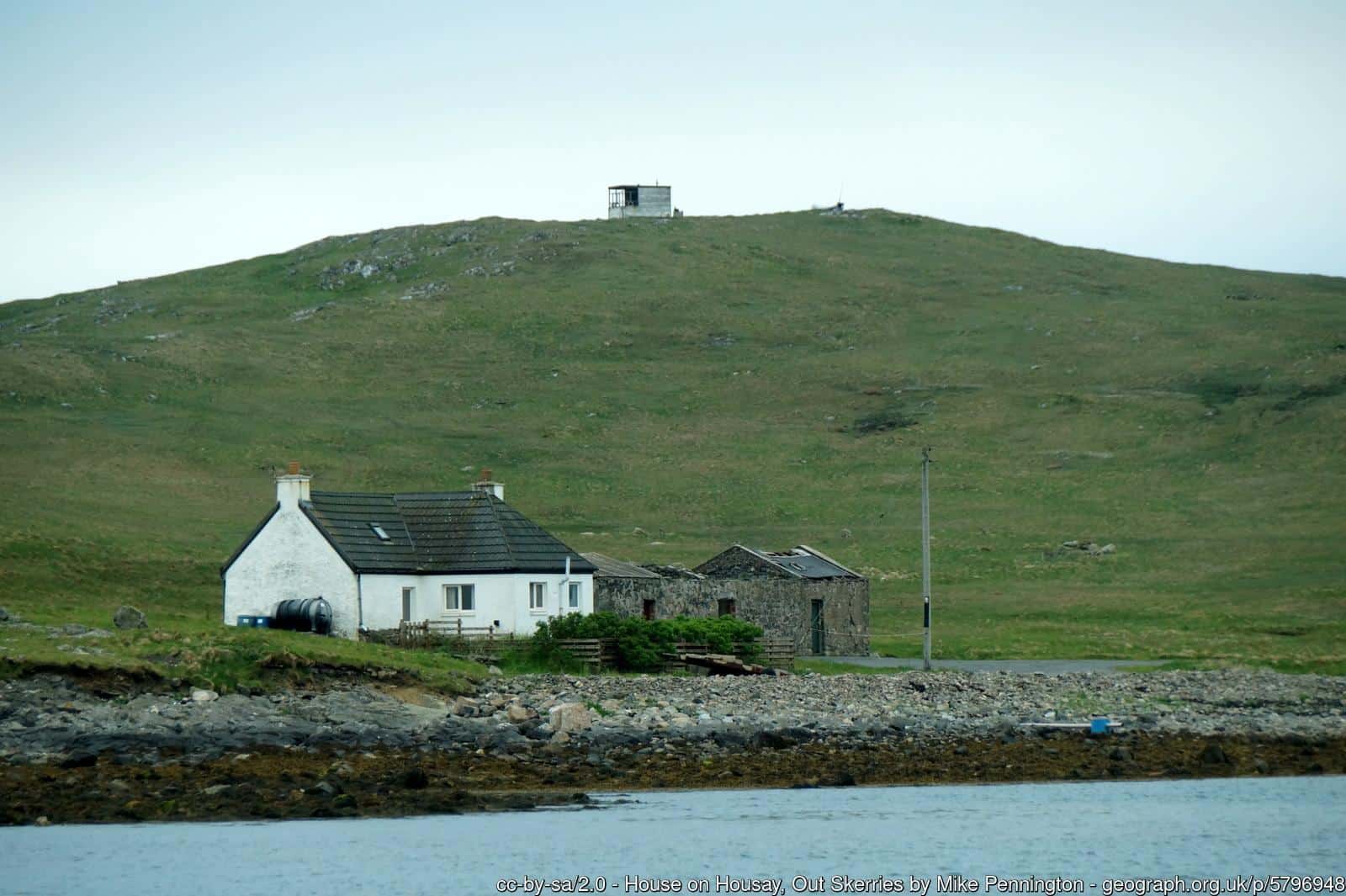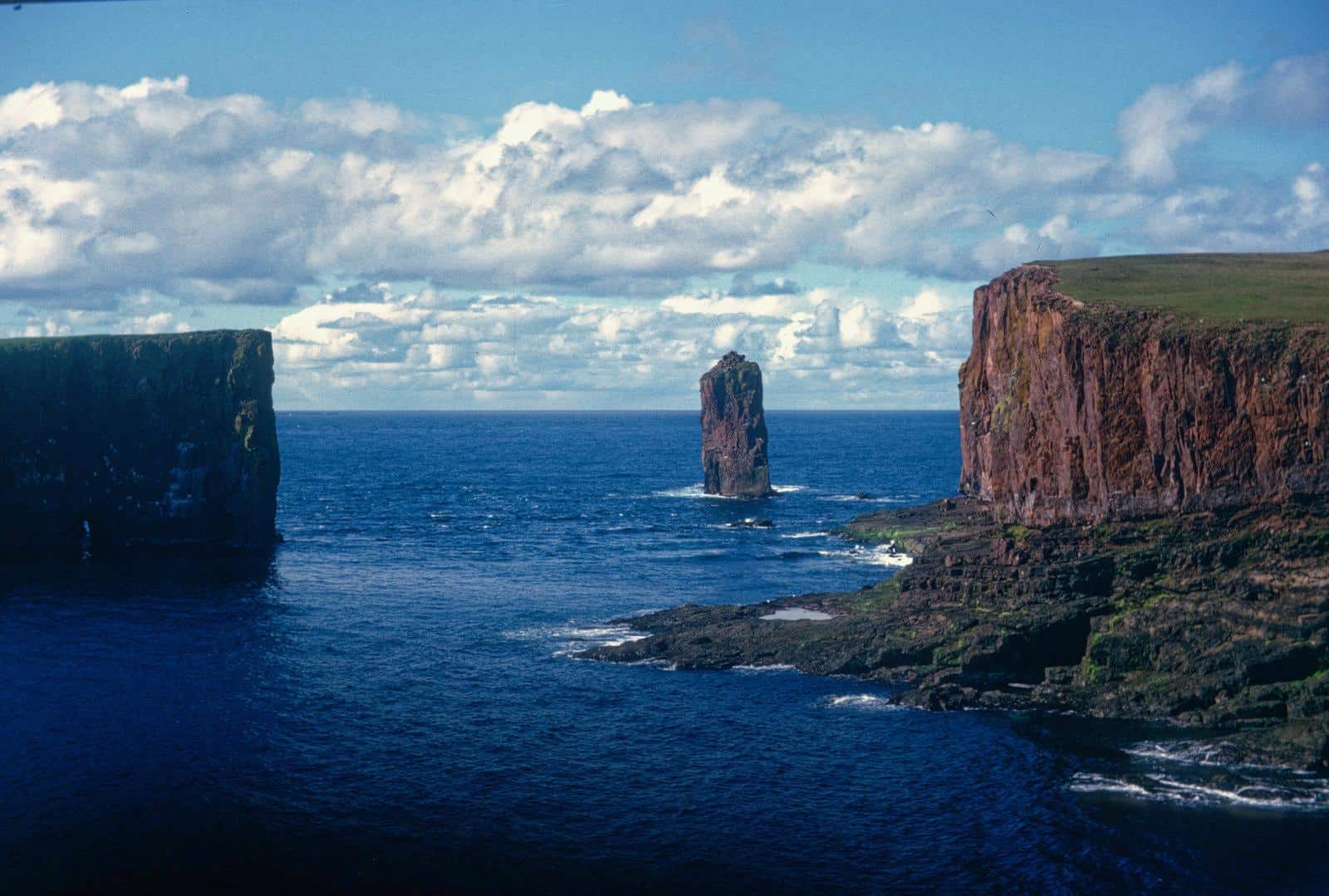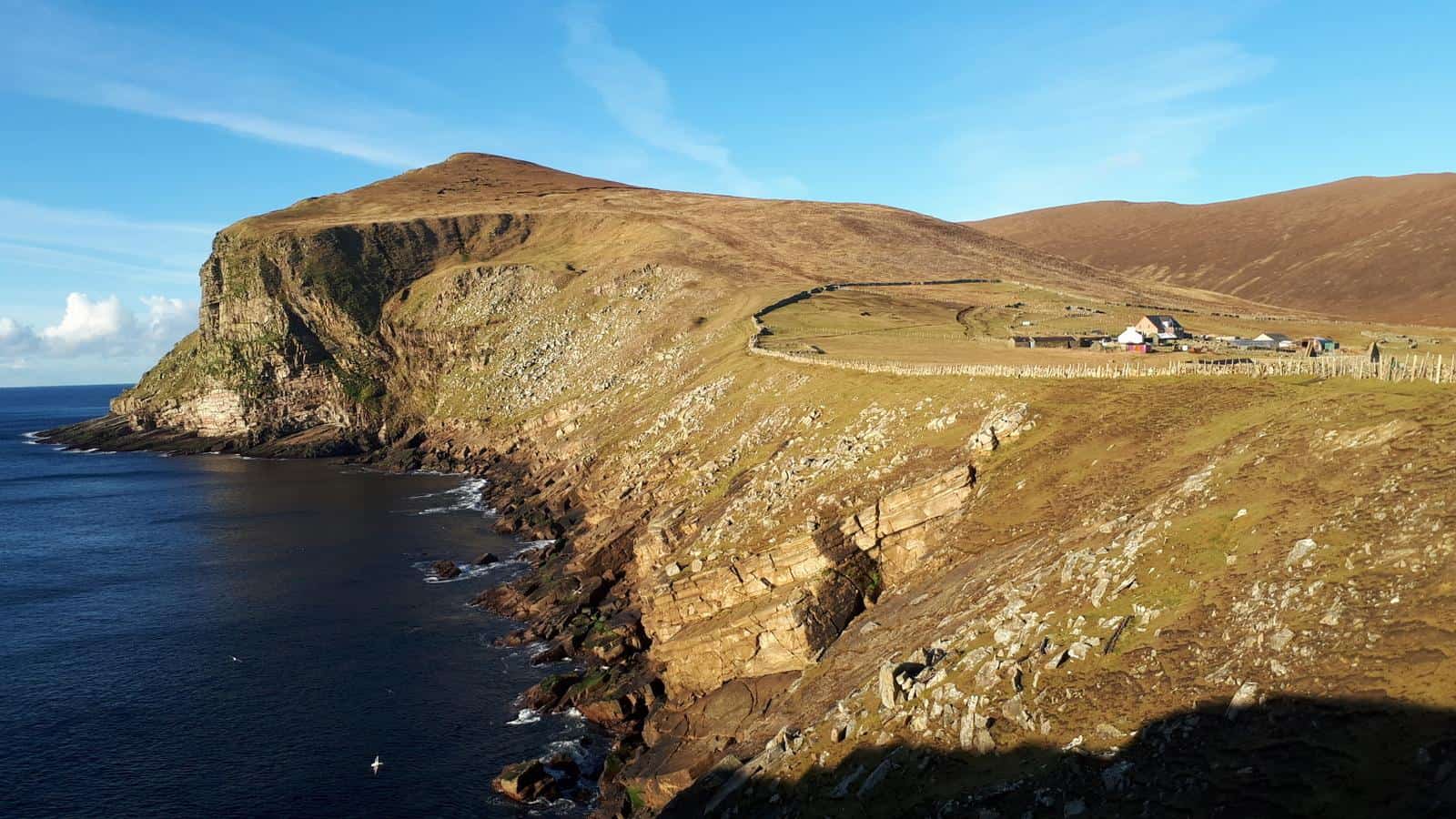
With far more than just medieval castles and whiskey distilleries to tour, Scotland’s remote islands are packed with things to see and breathtaking nature to revel in. Every island has its own unique history and culture and is begging to be explored. The diverse wildlife and birds that call the islands home bring these somewhat desolated spots to life and provide visitors with the sense that they’re truly at one with the wilds of nature. Here are five of the most remote isles off the Scottish mainland, each of which should be enjoyed at a leisurely pace and when weather permits.
Nestled within the St. Kilda archipelago, Hirta has been free of a human population since 1930, when the residents requested evacuation to the Scottish mainland. The barren, remote island they left behind lies westward of the Outer Hebrides, with the nearest landmass to the west being Labrador, Canada. Now a UNESCO World Heritage Site, Hirta is home to one of the world’s largest colonies of puffins and is the ultimate birdwatcher’s paradise, with hundreds of Atlantic species perching on the rugged cliffs of Hirta’s shoreline. If you’re hoping to experience total remoteness, few places in the Scottish isles will capture your imagination more than Hirta. This is best understood from two of Hirta’s unofficial names: “The Island on the Edge of the World” and “Ghost Island”.
Visitors to the island can enjoy wandering around the abandoned village, which lies in ruins and has been battered by the elements in the near-century it has laid unpopulated. The residents were forced to leave their land after their traditional ways of life became unsustainable, and several members of their once-thriving community were dying from preventable illnesses due to a lack of medical care on the island. It’s said that the residents that were evacuated left behind a bible and a bowl of oats at their home before starting their new life on the Scottish mainland.
Owned by the National Trust of Scotland, Hirta can be visited during most seasons, but bear in mind the harsh sea conditions at the height of winter that leave the island cut off from the Scottish mainland and mostly inaccessible to visitors.

An aerial view of Hirta’s ghost town
photography by: Phil Thirkell
Perhaps the least known of the islands introduced here, Housay is one of the three tiny islands that make up the Out Skerries. A Google search of Housay will yield very little information, which is all part of the allure of paying a visit to the island that is also known as West Isle. Housay, along with neighboring Bruray, are both inhabited, with a combined population of just seventy people. The other island that makes up the Skerries is Grunay, which lies unpopulated and totally exposed to the elements. Housay and its neighboring isles are the first landfall after Norway, and their position ensures they attract keen birdwatchers who clamor to see the migrating habits of several Atlantic species.
Visitors to Housay are treated to pristine, sandy beaches, rugged cliffs and rolling green hills, making it a perfect place for ramblers to venture out and enjoy the wilds of Scotland. For the more adventurous, many shipwrecks are dotted around Housay’s formidable coast, and scuba divers are intrigued to explore the wrecks lying on the seabed. Whatever your motivation to visit Housay, make sure you wrap up warm, even in the middle of summer. The Nordic wind is perishing and will catch you off guard if you don’t protect yourself from the elements.

A house nestled along Housay’s shoreline
photography by: Mike Pennington
Located almost exactly half-way between the islands of Orkney and Shetland and home to approximately sixty people, Fair Isle is a little gem of natural beauty that is owned by the National Trust of Scotland. It is actually the southernmost point of the Shetland archipelago and was initially named Firdarey (Island of Peace) by early Norse settlers. Because of its location, Fair Isle has been a useful landmark for shipping throughout the centuries. However, more than one hundred ships lie wrecked off the jagged coastline, the most notable being “El Gran Grifon” of the Spanish Armada that met its fate in a storm in 1588.
Like many of the Shetland Islands, Fair Isle is of considerable ornithological significance, as scientists and bird watchers alike are drawn to the island to witness the migratory patterns of many of the seabirds that are native to the region. What’s more, from an ecological perspective, the island is home to more than 250 flowering plant species, and visitors in the summer are greeted by great swathes of colorful, wildflower meadows. Given its natural beauty and variety, it will come as little surprise that the most distinguishing feature of Fair Isle is Sheep Rock, a rock structure that rises 132 meters above sea level.
Visitors to Fair Isle enjoy charting their routes up to the summit of Sheep Rock and enjoying the spectacular views across the ocean from the top. On a clear day, you’re able to see across to many of the surrounding islands, and it’s a wonderful spot from which to appreciate the remoteness of these Scottish islands.

Sheep grazing at a meadow in Fair Isle
photography by: CaptainOates
Papa Stour is yet another Shetland island of outstanding natural beauty. The thrashing waves of the Atlantic Ocean have sculpted jagged cliffs, arches and caves that give the island a somewhat intimidating look from the sea. But it’s also an island that has a rich and varied history, dating back thousands of years. The earliest settlers on Papa Stour were Missionary Celtic priests who were known to have settled on the island during the 6th century. As a result, the later Norse settlers named the island Papey Stora, which means “Big Island of the Priests”.
The most iconic site on the island is the abandoned huts on Hilla Fielle, where leprosy sufferers were once banished. The story goes that they relied on the hospitality and goodwill of the islanders to leave food for them at the bottom of the hill after being outcast from the main Shetland island. Although Papa Stour has been heavily populated in the past (at least compared to surrounding islands), its current population is less than twenty, as numbers have dwindled since the slowing of the fishing industry in the area. Travelers who visit the island enjoy the diverse wildlife that frequents its shores, including seals, birds and the elusive sea otter that is often spotted bobbing about in the waves.
With only one short road on the island, the best way to explore Papa Stour is on foot, and like many of the other small islands on the Shetland archipelago, it’s a wonderful opportunity to immerse yourself in nature and step away from the pressures of the outside world.

The Snolda sea-stack, Papa Stour
photography by: Julian Paren
The Shetland Island of Foula is often afforded the title of “the most remote inhabited island in Great Britain”, as its thirty residents often find themselves cut off from the world for large spells during winter, when the weather makes the surrounding seas unpassable. Such is the remoteness of Foula that Viking Norse was the lingua franca of the island’s residents up until the turn of the nineteenth century, with the people of the island employing largely Scandinavian farming practices at the time.
Foula sits 26 km southwest of the Shetland mainland and is home to the largest colony of great skuas in Great Britain, as well as plenty other bird and wildlife. Much of the birdlife can be seen in and around the 400-meter-tall cliffs that pierce out of the ocean, and bird watchers are attracted to the island every year to see its puffins, razorbills, and gannets, as well as the aforementioned skuas that call the island home. As for the human population, they primarily earn their living as sheep and pony farmers and are reliant on trade with the other Shetland islands when the weather permits.
While many of the Shetland Islands form part of the National Trust of Scotland, Foula is actually privately owned by the Holbourn family, and has been for the past century. In spite of its unusual ownership, Foula is a relatively popular destination with tourists that make it across from the mainland, offering a unique glimpse into life on one of Britain’s most remote inhabited islands.

The jagged shoreline of Foula
photography by: Mike Pennington
To get an idea of how remote Foula and the other Shetland Islands are, it takes a minimum of twelve hours to sail from the northern Scottish port city of Aberdeen to the Shetland mainland. From there, you have to source local ferries or even a small plane to take you to one of the outlying islets. The fact that they’re so distant shouldn’t detract you from visiting. On the contrary, it’s what makes them so special, and knowing that these remote islands off the coast of Scotland exist, makes them all the more enchanting for adventure-minded visitors.